Can you have a Komodo dragon as a pet? The short answer is generally no, and for very good reasons. PETS.EDU.VN explores the world of these fascinating creatures, diving into the reality of Komodo dragon ownership, and offering insights into alternative ways to appreciate these animals responsibly. Let’s embark on an adventure into the world of lizard keeping, reptile ownership and exotic animal care.
1. What Exactly Is A Komodo Dragon?
Varanus komodoensis, or the Komodo dragon, holds the title of the world’s largest lizard species. These formidable reptiles can reach lengths of up to 10 feet and weigh in at around 150 pounds. Their powerful build, sharp claws, and serrated teeth, combined with their venomous bite, make them a force to be reckoned with.
| Characteristic | Description |
|---|---|
| Scientific Name | Varanus komodoensis |
| Size | Up to 10 feet long |
| Weight | Up to 150 pounds |
| Distinguishing Features | Powerful build, sharp claws, serrated teeth, venomous bite |
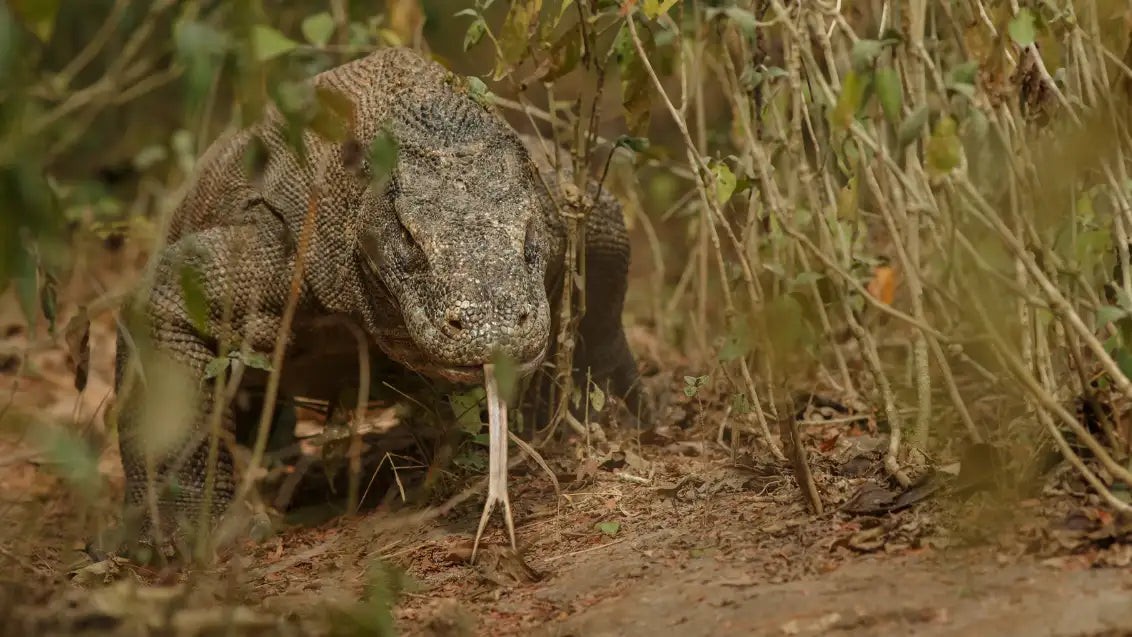
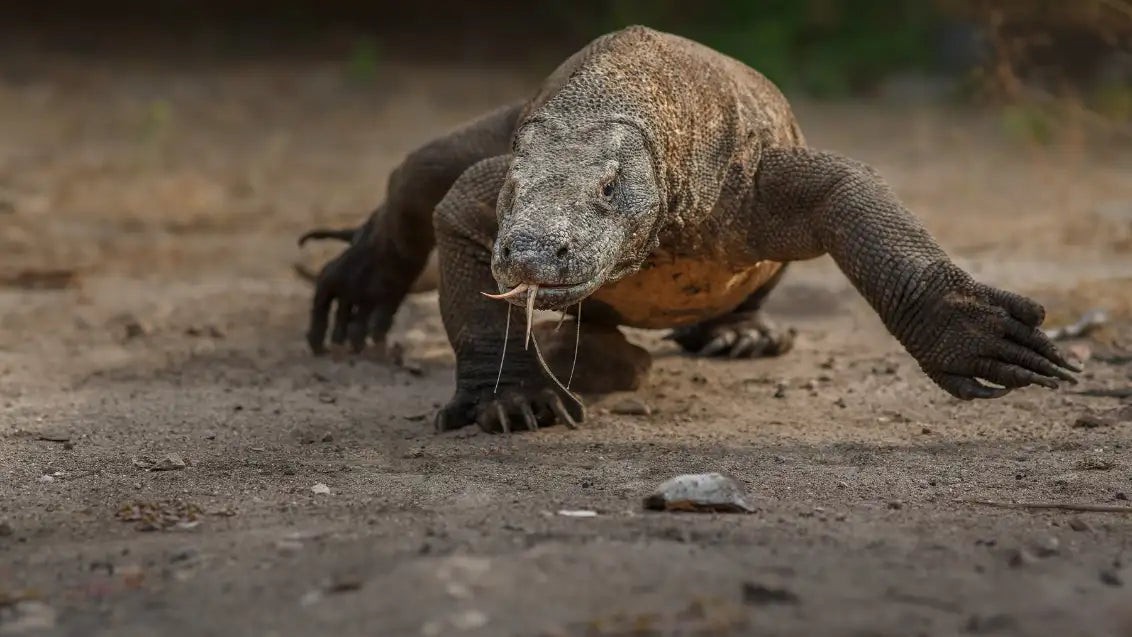
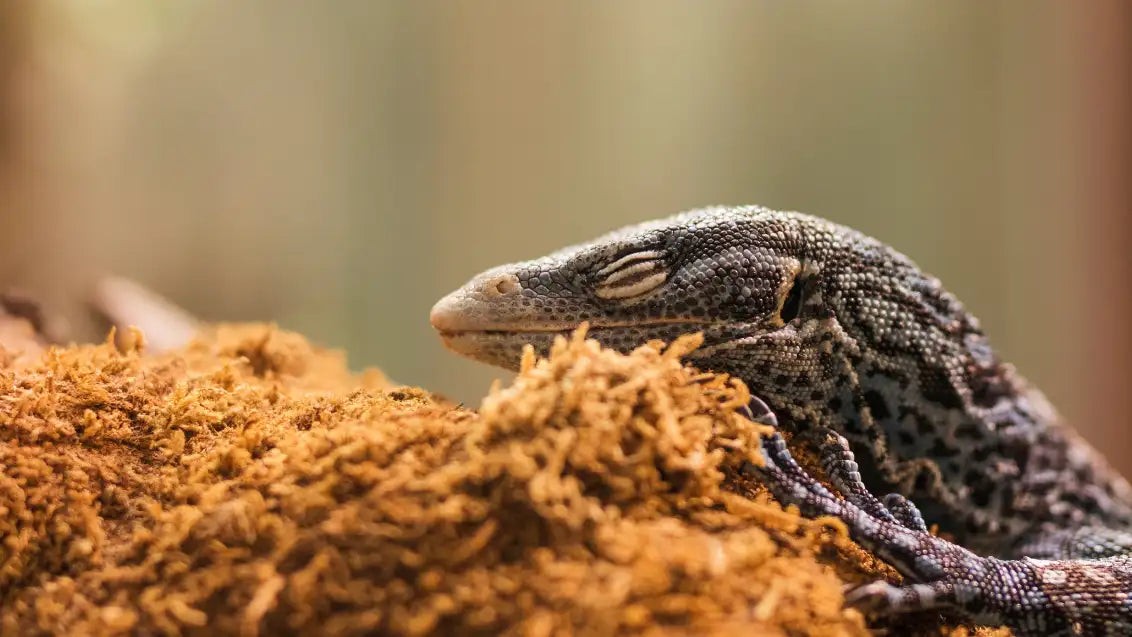
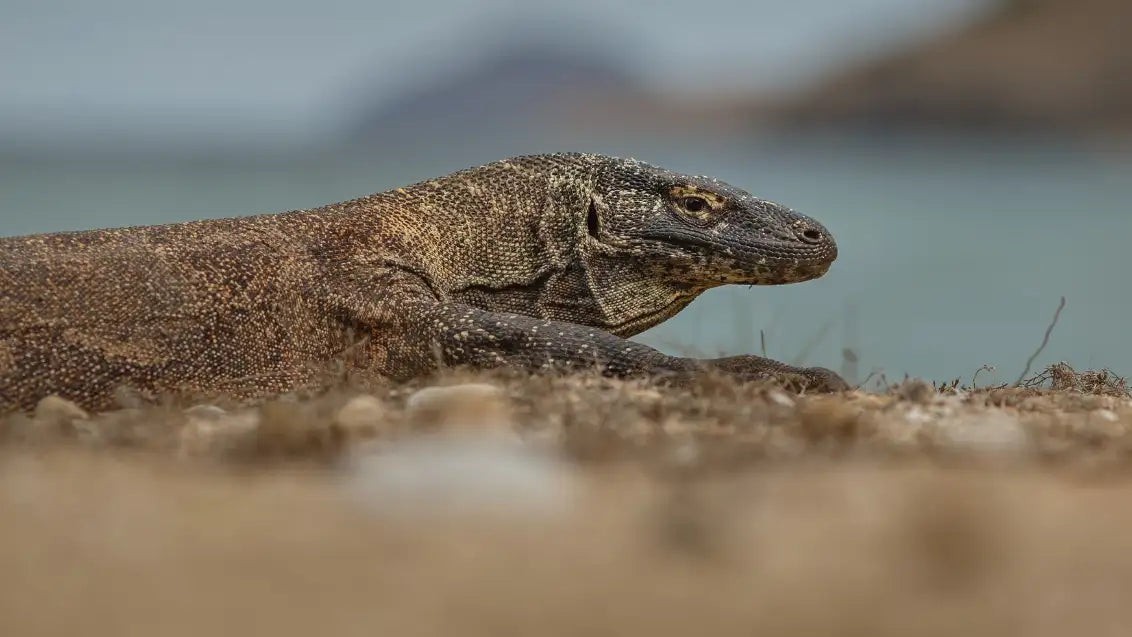
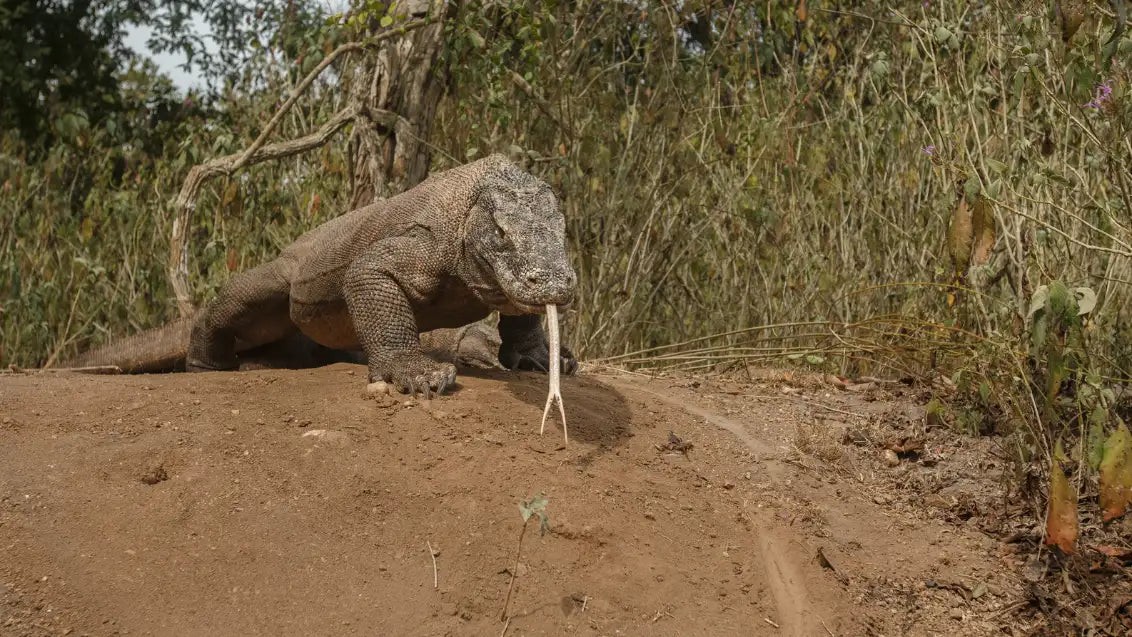
2. Understanding Their Natural Habitat And Behavior
Komodo dragons are native to a handful of Indonesian islands. Understanding their habitat and behavior is key to grasping why they don’t belong in a typical home.
2.1. Habitat Preferences
These dragons thrive in the hot and dry savanna landscapes of Indonesia, preferring open grasslands and forested areas. They require environments with temperatures ranging from 95°F to 110°F.
2.2. Typical Behavior
Komodo dragons are generally solitary animals, interacting primarily for mating and feeding. They are ambush predators, relying on stealth and power to hunt.
| Behavioral Trait | Description |
|---|---|
| Social Structure | Solitary, except during mating and feeding |
| Hunting Strategy | Ambush predators, using stealth and power |
| Reproduction | Oviparous (lay eggs), with an incubation period of approximately 8 months |
3. The Komodo Dragon Arsenal: Self-Defense Mechanisms
Komodo dragons are well-equipped for survival. Their self-defense mechanisms are a testament to their position as apex predators.
- Powerful Bite: Delivers deep, venomous wounds.
- Sharp Claws: Inflict significant lacerations.
- Thick, Armored Scales: Provide substantial protection against attacks.
- Whipping Tail: Can knock down prey or rivals.
- Speed: Can sprint up to 12 mph for short distances.
- Camouflage: Allows them to blend seamlessly into their environment.
- Aggressive Nature: Serves as a deterrent to potential threats.
4. Diet And Feeding Habits Of Komodo Dragons
These reptiles are known for their voracious appetite and unique feeding habits. They can consume up to 80% of their body weight in one sitting.
4.1. Unique Saliva Composition
Their saliva contains a cocktail of toxic bacteria and venom, leading to severe infection and shock in their prey.
4.2. Bone Digestion
Komodo dragons possess potent stomach acids that allow them to digest bones with ease.
4.3. Dietary Inclusions
Their diet typically consists of deer, pigs, water buffalo, smaller dragons, and carrion.
4.4. Powerful Jaw Muscles
Komodo dragons have exceptionally strong jaw muscles, allowing them to bite with immense force. This, combined with their serrated teeth and venom glands, makes their bite extremely deadly.
5. Answering The Question: Can You Keep A Komodo Dragon As A Pet?
The idea of owning a Komodo dragon is intriguing, but the reality presents numerous challenges and considerations.
5.1. Legal Status
Komodo dragons are classified as an endangered species. Consequently, their ownership is heavily restricted.
5.2. Ethical Implications
Keeping a Komodo dragon raises ethical concerns related to space, care, diet, and potential danger to humans.
5.3. Permit Requirements
Special permits are typically required for ownership, and these are exceedingly difficult to obtain.
| Consideration | Description |
|---|---|
| Legal Status | Endangered species, making ownership highly restricted and often illegal. |
| Ethical Concerns | The welfare of the animal in captivity, given their need for a natural habitat and social interactions. |
| Permit Needs | Stringent and often unattainable permits required, involving extensive documentation and justification. |
| Public Safety | Risks associated with keeping a dangerous animal, including potential harm to humans and other animals. |
| Conservation Impact | Removing individuals from their natural habitat can harm the species’ overall population and genetic diversity. |
6. The Realities: Challenges Of Komodo Dragon Ownership
There are many significant challenges to consider before even contemplating Komodo dragon ownership.
6.1. Space Requirements
Komodo dragons are large and require ample space to roam and express natural behaviors. A typical household is simply insufficient.
6.2. Dietary Demands
Providing an appropriate diet for a Komodo dragon is both difficult and expensive. They require large quantities of fresh meat, which can be challenging to source.
6.3. Safety Concerns
Komodo dragons possess sharp claws, strong jaws, and venomous saliva, posing a significant risk to humans. Handling them requires extensive training and expertise, making them unsuitable for the average pet owner. According to a report by the International Herpetological Society in February 2024, Komodo dragon bites can result in severe envenomation, necessitating immediate medical intervention and potentially leading to long-term health complications.
6.4. Veterinary Care
Finding veterinary care for a Komodo dragon can be difficult. They have unique health needs that require specialized medical attention not typically available at standard veterinary practices.
7. Exploring Alternatives To Komodo Dragon Ownership
While owning a Komodo dragon may be out of reach, there are alternative ways to appreciate and learn about these amazing creatures.
7.1. Zoos And Sanctuaries
Visiting zoos and wildlife sanctuaries offers a safe and controlled environment where you can observe Komodo dragons up close.
7.2. Supporting Conservation
Contributing to conservation efforts through donations, volunteering, or spreading awareness can make a significant impact on the protection of Komodo dragons in the wild. According to a study by the Komodo Survival Program in March 2025, community-based conservation initiatives have shown promising results in mitigating human-wildlife conflict and promoting sustainable coexistence.
7.3. Smaller Reptiles As Pets
Consider keeping smaller reptile species that can be responsibly cared for in a home environment. Bearded dragons, leopard geckos, and ball pythons are popular choices.
| Alternative | Description |
|---|---|
| Zoo and Sanctuary Visits | Provides a safe and educational environment to observe Komodo dragons and learn about their behavior and conservation status. |
| Conservation Support | Contributes to the protection of Komodo dragons in their natural habitat through donations, volunteering, and advocacy. |
| Smaller Reptile Ownership | Allows responsible pet ownership with species that have manageable care requirements, such as bearded dragons, leopard geckos, or ball pythons, based on research from PETS.EDU.VN. |
8. Komodo Dragon Care: Essential Considerations
Even if you could legally and ethically own a Komodo dragon, understanding their care requirements is crucial.
8.1. Housing
Komodo dragons require large, secure enclosures that mimic their natural habitat. These enclosures must include appropriate temperature gradients, humidity levels, and hiding places.
8.2. Feeding
A Komodo dragon’s diet should consist of whole prey items, such as rodents, rabbits, and birds. Supplementation with vitamins and minerals is also necessary to ensure proper nutrition.
8.3. Health
Regular veterinary check-ups are essential for maintaining a Komodo dragon’s health. Common health issues include parasitic infections, respiratory problems, and metabolic bone disease.
8.4. Enrichment
Providing enrichment is vital for the psychological well-being of captive Komodo dragons. This can include offering novel food items, providing opportunities for exploration, and engaging in training exercises.
9. Komodo Dragon Conservation: Contributing To Their Survival
The Komodo dragon is listed as a vulnerable species by the International Union for Conservation of Nature (IUCN). Supporting conservation efforts is crucial to their long-term survival.
9.1. Habitat Protection
Protecting and restoring Komodo dragon habitats is essential for maintaining their populations in the wild.
9.2. Community Engagement
Engaging local communities in conservation efforts can help reduce human-wildlife conflict and promote sustainable coexistence.
9.3. Research And Monitoring
Continued research and monitoring are necessary to understand Komodo dragon populations, behavior, and threats.
10. Dispelling Myths About Komodo Dragons
There are several misconceptions about Komodo dragons that need to be addressed.
10.1. Myth: They Are Invincible
While Komodo dragons are formidable predators, they are still vulnerable to habitat loss, poaching, and climate change.
10.2. Myth: They Are Always Aggressive
Komodo dragons are generally solitary and only aggressive when threatened or hunting.
10.3. Myth: Their Bite Is Always Fatal
While their bite can cause severe infection and shock, it is not always fatal if treated promptly.
11. Komodo Dragon Facts: Fascinating Insights
Here are some fascinating facts about Komodo dragons that highlight their unique biology and behavior:
- Komodo dragons are the largest living lizards on Earth.
- They are native to only a few Indonesian islands.
- They can run up to 12 miles per hour.
- They can consume up to 80% of their body weight in a single meal.
- They have venomous saliva containing a cocktail of toxic bacteria.
- They can digest bones with ease.
- They are ambush predators, relying on stealth and power to hunt.
- They are generally solitary, except during mating and feeding.
- They lay eggs with an incubation period of approximately 8 months.
- They are listed as a vulnerable species by the IUCN.
12. Komodo Dragons And Culture: Their Role In Local Lore
Komodo dragons hold a significant place in the local culture of the Indonesian islands they inhabit. They are often featured in myths, legends, and traditional stories.
12.1. Symbolism
In some local cultures, Komodo dragons are seen as symbols of strength, power, and resilience.
12.2. Rituals
Komodo dragons may play a role in certain traditional rituals and ceremonies.
12.3. Tourism
Komodo dragons attract tourists from around the world, contributing to the local economy and raising awareness about conservation efforts.
13. Understanding Komodo Dragon Venom
The venom of the Komodo dragon is a complex cocktail of toxins that can have a variety of effects on its prey.
13.1. Composition
Komodo dragon venom contains proteins that inhibit blood clotting, lower blood pressure, and cause muscle paralysis.
13.2. Effects
The venom can cause severe pain, swelling, and bleeding. It can also lead to shock and death in severe cases.
13.3. Treatment
Treatment for Komodo dragon envenomation includes supportive care, such as wound cleaning and antibiotics. In some cases, antivenom may be necessary.
14. Komodo Dragon Research: What Scientists Are Learning
Scientists are conducting ongoing research to learn more about Komodo dragons and their role in the ecosystem.
14.1. Genetics
Genetic studies are helping to understand the evolutionary history and population structure of Komodo dragons.
14.2. Behavior
Behavioral studies are providing insights into their hunting strategies, social interactions, and communication methods.
14.3. Ecology
Ecological studies are examining their role in the food web and their impact on the environment.
15. The Future Of Komodo Dragons: Challenges And Opportunities
The future of Komodo dragons is uncertain, but there are opportunities to ensure their long-term survival.
15.1. Climate Change
Climate change poses a significant threat to Komodo dragons, as rising sea levels could inundate their habitats.
15.2. Habitat Loss
Habitat loss due to human activities, such as deforestation and agriculture, is also a major concern.
15.3. Sustainable Tourism
Sustainable tourism practices can help protect Komodo dragon habitats and provide economic benefits to local communities.
16. Komodo Dragon vs. Other Large Lizards
How do Komodo dragons compare to other large lizard species?
16.1. Size
Komodo dragons are the largest lizards in the world, reaching lengths of up to 10 feet.
16.2. Venom
Komodo dragons are one of the few lizard species that possess venom.
16.3. Diet
Komodo dragons are carnivores, feeding on a variety of prey items, including deer, pigs, and water buffalo.
| Lizard Species | Size | Venom | Diet |
|---|---|---|---|
| Komodo Dragon | Up to 10 feet | Present | Carnivorous: deer, pigs, water buffalo, carrion |
| Saltwater Crocodile | Up to 23 feet | Absent | Carnivorous: fish, turtles, birds, mammals |
| Nile Monitor | Up to 7 feet | Absent | Carnivorous: insects, crustaceans, fish, reptiles, birds, mammals |
| Green Iguana | Up to 6 feet | Absent | Herbivorous: leaves, flowers, fruits |
17. Komodo Dragon Reproduction and Life Cycle
Understanding the Komodo dragon’s reproductive habits is crucial for conservation.
17.1. Mating Rituals
Komodo dragons have unique mating rituals, often involving aggressive displays and competition among males.
17.2. Nesting and Incubation
Females lay their eggs in nests, often in abandoned megapode mounds, and the incubation period lasts around 8 months.
17.3. Juvenile Survival
Young Komodo dragons are vulnerable and often spend their early years in trees to avoid predation.
18. Interacting with Komodo Dragons in the Wild: Safety Guidelines
If you ever find yourself in an area where Komodo dragons live, it’s important to know how to stay safe.
18.1. Maintain Distance
Always keep a safe distance from Komodo dragons and avoid approaching them.
18.2. Stay Alert
Be aware of your surroundings and watch for signs of Komodo dragons, such as tracks or droppings.
18.3. Follow Local Guidelines
Adhere to any guidelines or warnings provided by local authorities or park rangers.
19. How Komodo Dragons Hunt: Strategies and Techniques
Komodo dragons are skilled hunters, employing various strategies to catch their prey.
19.1. Ambush Predation
They often lie in wait for unsuspecting prey to pass by, then ambush them with a sudden burst of speed.
19.2. Venomous Bite
Their venomous bite weakens and eventually kills their prey, even if the initial attack is not immediately fatal.
19.3. Tracking and Persistence
Komodo dragons can track their prey over long distances, using their keen sense of smell.
20. The Role of Komodo Dragons in Their Ecosystem
Komodo dragons play a crucial role in maintaining the balance of their ecosystem.
20.1. Apex Predators
As apex predators, they help control populations of other animals, preventing overgrazing and maintaining biodiversity.
20.2. Scavengers
They also act as scavengers, consuming carrion and helping to prevent the spread of disease.
20.3. Seed Dispersers
By consuming fruits and seeds, they contribute to seed dispersal and plant regeneration.
21. Komodo Dragons and Tourism: Balancing Conservation and Economy
Tourism can be both a blessing and a curse for Komodo dragon conservation.
21.1. Economic Benefits
Tourism generates revenue for local communities, providing incentives to protect Komodo dragons and their habitats.
21.2. Environmental Impacts
However, tourism can also have negative impacts, such as habitat degradation, pollution, and disturbance of wildlife.
21.3. Sustainable Practices
Sustainable tourism practices, such as eco-friendly accommodations and responsible wildlife viewing, can help minimize these impacts.
22. The Cultural Significance of Komodo Dragons in Indonesia
Komodo dragons are deeply embedded in the cultural fabric of Indonesia.
22.1. Myths and Legends
They feature prominently in local myths and legends, often depicted as powerful and mystical creatures.
22.2. Traditional Beliefs
Some local communities believe that Komodo dragons have spiritual powers and should be respected.
22.3. National Symbol
Komodo dragons are a national symbol of Indonesia, representing the country’s unique biodiversity.
23. Komodo Dragons in Captivity: Welfare Considerations
Keeping Komodo dragons in captivity raises important questions about animal welfare.
23.1. Enclosure Design
Captive Komodo dragons require large, complex enclosures that mimic their natural habitat and provide opportunities for natural behaviors.
23.2. Behavioral Enrichment
Enrichment programs are essential to prevent boredom and promote psychological well-being.
23.3. Veterinary Care
Captive Komodo dragons require specialized veterinary care to address their unique health needs.
24. Komodo Dragon Attacks on Humans: Understanding the Risks
While rare, Komodo dragon attacks on humans can occur.
24.1. Risk Factors
Factors that increase the risk of attack include approaching Komodo dragons too closely, feeding them, and being in areas where they are actively hunting.
24.2. Prevention Measures
Preventive measures include maintaining a safe distance, avoiding areas where Komodo dragons are present, and following local guidelines.
24.3. First Aid
If attacked, seek immediate medical attention and clean the wound thoroughly.
25. The Ethical Considerations of Owning Exotic Pets
The question of whether to own exotic pets raises complex ethical considerations.
25.1. Animal Welfare
Exotic pets often have complex needs that are difficult to meet in captivity, raising concerns about animal welfare.
25.2. Conservation Impacts
The exotic pet trade can have negative impacts on wild populations, driving species towards extinction.
25.3. Public Safety
Exotic pets can pose risks to public safety, as they may be dangerous or carry diseases.
26. Latest Discoveries in Komodo Dragon Research
Stay updated with the newest findings in Komodo dragon research.
26.1. Genetic Diversity
Recent studies have shed light on the genetic diversity of Komodo dragon populations, informing conservation strategies.
26.2. Venom Composition
Researchers have made new discoveries about the composition and effects of Komodo dragon venom, potentially leading to medical applications.
26.3. Behavioral Adaptations
New research has revealed fascinating insights into the behavioral adaptations that allow Komodo dragons to thrive in their environment.
27. The Impact of Climate Change on Komodo Dragon Habitats
Climate change poses a significant threat to Komodo dragon habitats.
27.1. Sea Level Rise
Rising sea levels could inundate coastal habitats, reducing the available space for Komodo dragons.
27.2. Changes in Precipitation
Changes in precipitation patterns could alter vegetation and prey availability, impacting Komodo dragon populations.
27.3. Conservation Strategies
Conservation strategies, such as habitat restoration and climate change mitigation, are needed to protect Komodo dragons from these threats.
28. Komodo Dragons and Their Role in Folklore
Explore the myths and legends surrounding Komodo dragons.
28.1. Creation Myths
In some local cultures, Komodo dragons are believed to have played a role in the creation of the world.
28.2. Guardian Spirits
They are sometimes seen as guardian spirits, protecting people and communities from harm.
28.3. Moral Lessons
Stories about Komodo dragons often convey moral lessons about respecting nature and living in harmony with the environment.
29. The Challenges of Studying Komodo Dragons in the Wild
Studying Komodo dragons in the wild presents numerous challenges.
29.1. Remote Locations
Their habitats are often remote and difficult to access, requiring researchers to travel long distances.
29.2. Dangerous Conditions
Working in close proximity to Komodo dragons can be dangerous, requiring researchers to take precautions.
29.3. Logistical Issues
Logistical issues, such as obtaining permits and securing funding, can also hinder research efforts.
30. Komodo Dragons as a Symbol of Indonesian Biodiversity
Komodo dragons represent the unique biodiversity of Indonesia.
30.1. National Pride
They are a source of national pride, showcasing the country’s rich natural heritage.
30.2. Conservation Efforts
Their conservation is seen as a priority, reflecting Indonesia’s commitment to protecting its biodiversity.
30.3. Ecotourism
They attract ecotourists from around the world, contributing to the local economy and raising awareness about conservation issues.
31. The Evolutionary History of Komodo Dragons
Trace the evolutionary journey of these incredible reptiles.
31.1. Ancient Lineage
Komodo dragons have an ancient lineage, dating back millions of years.
31.2. Island Evolution
Their evolution has been shaped by the unique conditions of the Indonesian islands they inhabit.
31.3. Adaptive Traits
They have evolved a range of adaptive traits that allow them to thrive in their environment, such as venom and powerful jaws.
32. The Impact of Human Activities on Komodo Dragon Populations
Human activities have had a significant impact on Komodo dragon populations.
32.1. Habitat Destruction
Habitat destruction due to deforestation and agriculture has reduced the available space for Komodo dragons.
32.2. Poaching
Poaching for their skin and other body parts has also contributed to their decline.
32.3. Conservation Measures
Conservation measures, such as habitat protection and anti-poaching patrols, are needed to mitigate these impacts.
33. Komodo Dragons in Popular Culture: Movies and Documentaries
Komodo dragons have captured the imagination of filmmakers and audiences alike.
33.1. Fictional Depictions
They have been featured in numerous movies and documentaries, often portrayed as fearsome and dangerous creatures.
33.2. Educational Value
These portrayals can raise awareness about Komodo dragons and their conservation needs, but it’s important to distinguish fact from fiction.
33.3. Responsible Filmmaking
Responsible filmmaking practices can help ensure that Komodo dragons are depicted accurately and respectfully.
34. Frequently Asked Questions (FAQs) About Komodo Dragons
Here are some frequently asked questions about Komodo dragons:
34.1. How Do Komodo Dragons Digest Bones?
Komodo dragons digest bones using powerful stomach acids.
34.2. What Happens If A Komodo Dragon Bites You?
If a Komodo dragon bites you, its saliva’s bacteria and venom can cause severe infection and shock. Seek immediate medical attention.
34.3. How Fast Can A Komodo Dragon Run?
A Komodo dragon can run up to 12 miles per hour (20 km/h).
34.4. Is It Legal To Own A Komodo Dragon?
It is illegal to own a Komodo dragon in most places due to their endangered status and danger to humans.
34.5. Have There Been Cases Of Komodo Dragons Eating Humans?
Komodo dragons rarely attack humans, as they prefer smaller prey. Human attacks are very uncommon but have been reported.
34.6. Are Komodo Dragons Suitable As Pets?
Komodo dragons are not suitable as pets due to their size, danger, and complex care needs. They are wild animals best left in their natural habitat.
34.7. Do Komodo Dragons Eat Goats?
Yes, Komodo dragons do prey on larger animals, including goats, using their venomous bite to bring down their prey.
34.8. How Long Do Komodo Dragons Live?
Komodo dragons typically live for about 30 years in the wild.
34.9. What Is The Conservation Status Of Komodo Dragons?
Komodo dragons are currently listed as a vulnerable species by the IUCN.
34.10. Where Can I See Komodo Dragons In Person?
You can see Komodo dragons in zoos and wildlife sanctuaries around the world.
Conclusion: Appreciating Komodo Dragons Responsibly
While the idea of keeping a Komodo dragon as a pet may be tempting, legal, ethical, and practical challenges make it unfeasible and potentially dangerous. Instead, we can appreciate these magnificent reptiles by supporting conservation efforts, visiting zoos and sanctuaries, and learning more about their unique biology and behavior. For more in-depth information on reptile care and conservation, visit PETS.EDU.VN.
Remember, responsible pet ownership starts with understanding the needs of the animal and respecting its place in the wild. If you’re passionate about reptiles, consider adopting a smaller, more manageable species and providing it with the best possible care.
Visit pets.edu.vn today to discover a wealth of information on responsible pet ownership, expert advice on animal care, and resources for finding reputable veterinary services near you. Contact us at 789 Paw Lane, Petville, CA 91234, United States, or reach out via WhatsApp at +1 555-987-6543. Let’s work together to ensure the well-being of all animals, big and small.
